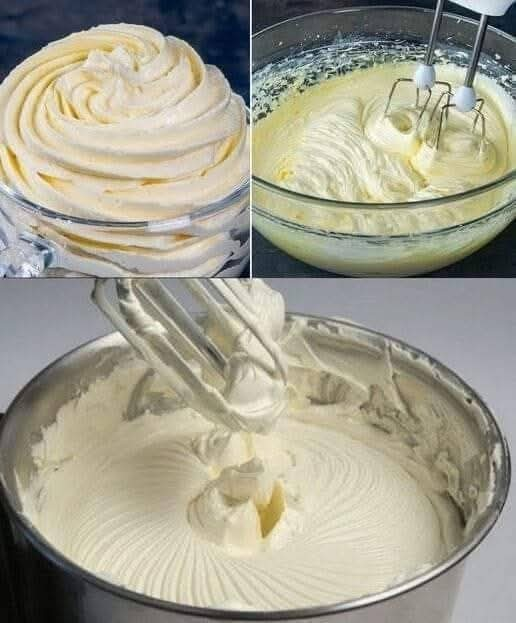Pastry Cream is a classic, silky custard that serves as the foundation for many beloved desserts, including éclairs, fruit tarts, and cream puffs.
Its rich, velvety texture comes from the perfect blend of milk, egg yolks, sugar, and cornstarch, cooked to creamy perfection.
The key to achieving the ideal pastry cream lies in careful cooking, constant stirring, and proper cooling to avoid lumps or curdling.
With its smooth consistency and delightful vanilla flavor, pastry cream is a versatile and essential component in both traditional and modern pastry creations.
Ingredients
2 cups (480 ml) whole milk
1/2 cup (100 g) granulated sugar
4 large egg yolks
1/4 cup (30 g) cornstarch
2 tablespoons (30 g) unsalted butter
1 teaspoon vanilla extract
Pinch of salt
Directions
Heat the Milk: Put a medium saucepan of milk on fire and bring to the boil. Don’t permit it to become that hot which causes boiling.
Mix Sugar and Yolks: In another dish, beat into one another sugar and egg yolks until pale and thickened.
Add Cornstarch: Stir in corn flour into the egg yolk mixture until fully combined.
Temper the Eggs: While whisking continuously add half the hot milk into the egg yolk mixture at a slow pace to avoid curdling of eggs.
Combine Mixtures: Pour back tempered egg mixture into remaining milk in sauce pan.
Cook the Cream: Boil over moderate heat stirring all through till it becomes thick. Continue to cook for 1-2 more minutes after boiling to ensure that cornstarch is well cooked through.
Add Butter and Vanilla: Remove from heat, stir in butter and vanilla extract till smooth.
Cool the Cream: Place pastry cream in a bowl, cover with plastic wrap pressing directly onto surface to prevent skin from forming; leave out at room temperature until cool then refrigerate until ready to use.
There are many variations you can try with pastry cream to suit different desserts.
For a chocolate version, add melted dark chocolate or cocoa powder after cooking.
To infuse unique flavors, steep ingredients like coffee beans, citrus zest, or vanilla pods in the milk before heating.
For a lighter texture, fold in whipped cream after the pastry cream has cooled, creating a smooth diplomat cream.
Tips for success include tempering the eggs slowly to avoid curdling, stirring constantly while cooking to prevent lumps, and pressing plastic wrap directly onto the surface while cooling to prevent a skin from forming.
With these adjustments, you can customize pastry cream to fit a variety of desserts and flavor profiles.
To store pastry cream, allow it to cool completely after cooking.
Transfer it to a clean bowl and press a layer of plastic wrap directly onto the surface to prevent a skin from forming.
Place the bowl in the refrigerator and keep it chilled until ready to use.
Pastry cream can be stored safely for up to 3-4 days. Avoid freezing it, as the texture can become watery and grainy upon thawing.
Before using, give the pastry cream a gentle whisk to restore its smooth consistency.
Proper storage ensures freshness and maintains its silky, creamy texture.
The nutritional information for pastry cream varies depending on portion size and specific ingredients used.
On average, a 1/2-cup (120g) serving provides around 200-250 calories.
It contains approximately 10-15g of fat, primarily from egg yolks and butter, with 6-8g of saturated fat.
Carbohydrates make up about 25-30g, mainly from sugar and cornstarch, while protein content is around 4-6g due to the eggs and milk.
Pastry cream also offers essential nutrients like calcium from the milk and small amounts of vitamins A and D.
While it is rich and indulgent, using lower-fat milk or reducing sugar can make it a bit lighter without compromising its creamy texture.
